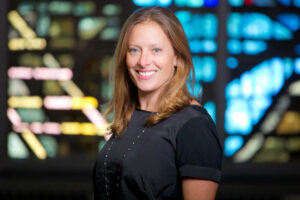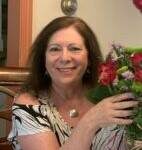
Rabbi Geri Newburge
Parshat Pekudei
Shakespeare wrote in “Hamlet,” “The apparel oft proclaims the man,” though he was not the first to convey the sentiment.
Parshat Pekudei describes the production of the vestments to be worn by the high priest, Kohen Hagadol, and the other priests though they are described previously in the portion Tetzaveh. These vestments include the apron, breastplate, cloak, crown, hat, tunic, sash and breeches. Such articles of clothing set the stage for the sacred work of the Kohen Hagadol and, in one case, prompted the direct connection between the Eternal and the Kohen Hagadol.
Only the high priest wore the breastplate, in Hebrew called choshen. This was no ordinary breastplate. It functioned as an active intermediary between the Kohen Hagadol and the Holy Blessed One. The choshen contained 12 precious stones and the names of the 12 tribes to which they corresponded.
When confronted with a significant dilemma, when Divine advice or consent was required, the high priest would face the Ark of the Covenant, and the king or another influential figure would stand behind him, facing his back. The individual would pose his question quietly, so only the high priest could hear it, and the high priest would reflect upon the Divine name placed within the breastplate. Then letters of the names of the Tribes would light up in response to the inquiry. According to the Talmud, the ability to receive Divine answers via the breastplate ceased with the destruction of the First Temple.
It’s important to note that the full term in Hebrew for the breastplate is choshen mishpat, the latter word of the phrase which means “resolution” or “judgment.” With this ritual, our ancestors were able to resolve their challenges in a way that provided clarity and certainty, setting the course for the community.
Our rabbis teach in their commentary on the creation story that initially the Holy One sought to make the universe with Din, strict judgment. However, when the Eternal saw that it would not last like that, the virtue of mercy was added.
Being created in God’s image meant that the Kohen Hagadol could not act only with judgment. In fact, earlier in the book of Exodus we read that the choshen mishpat is placed over his heart (also conveyed in our English name of breastplate), reminding the Kohen to offer judgment with compassion.
Can you imagine if we could still consult the choshen mishpat? Can you imagine how we might reconcile the world’s problems — the war with Gaza? World hunger? Gun violence? Political discord? Divine guidance has never been more necessary.
Yet, here we are, faced with countless challenges for which we seemingly have no viable answers or answers on which a majority of people can agree. Instead, we must struggle to find the answers for ourselves and carry on the sacred work the priests were charged with doing in Pekudei.
We must harness the purpose and inspiration of the choshen mishpat as we negotiate the balance of judgment and compassion in the conflicts and debates raging in society. It is possible.
At the end of the Civil War, Generals Grant and Lee worked to find a new way forward that would bring the country together. By all accounts, the regard each general had for the other was an irrefutable fact. That respect extended to the soldiers on both sides.
Grant paroled the Confederate soldiers. He gave them rations and, through a request made by Lee, he allowed them to take their horses home to help them rebuild their lives. He treated them with the same respect and dignity he accorded Lee, even as the Confederate soldiers laid down their arms before Gen. Joshua Chamberlain. On the day of surrender, Lee told his soldiers to go home and resume their lives, exhorting them to live as bravely as they served, and he would be enormously proud.
Judgment and compassion — these are the virtues that guided the Kohen Hagadol as well as General Grant — and should guide us as well in all our difficult interactions, personal and societal. May we continue to take inspiration from our text and traditions, living up to the best humanity has to offer.
Rabbi Geri Newburge serves at Main Line Reform Temple-Beth Elohim in Wynnewood. The Board of Rabbis of Greater Philadelphia is proud to provide diverse perspectives on Torah commentary for the Jewish Exponent. The opinions expressed in this column are the author’s own and do not necessarily reflect the view of the Board of Rabbis.





